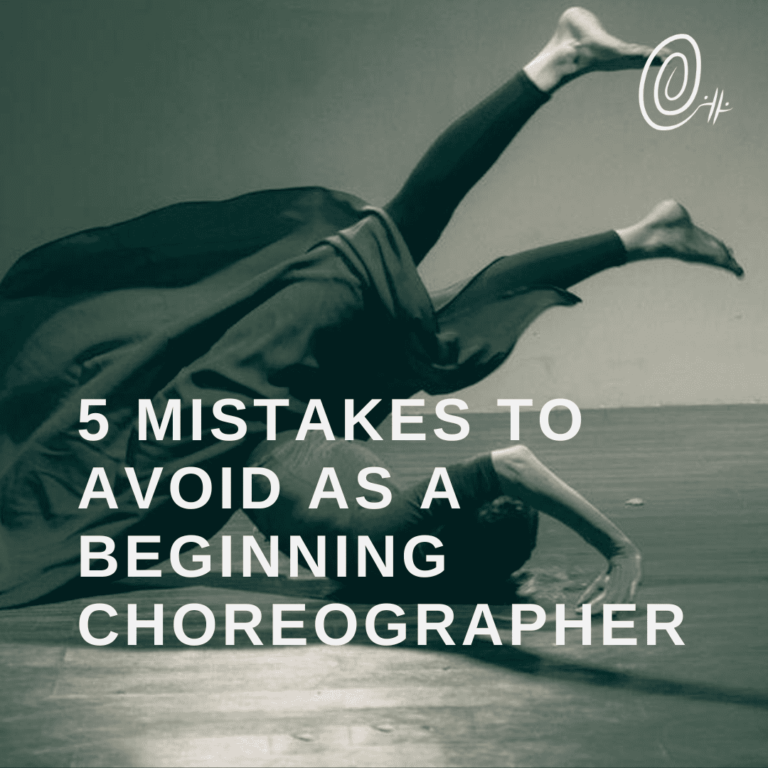Why Contemporary Dance is Colonial
It should not come as a surprise that dance and contemporary dance, while often seen or celebrated as a connecting feature of humanity, has been used for colonial purposes. Whether that’s controlling who dances and why in colonized countries or ongoing barriers around who can do what style, it’s really only in the past couple decades that dance studies have started to examine the depth to which dance has contributed to colonial practices and ideas.
The discussion often surrounds ‘western concert dance.’ This generally refers to ballet, modern, and contemporary styles. While ballet is glaringly colonial in its historical arrogance, gatekeeping, and adherence to so-called ‘tradition’ in choosing who can do it and how, we don’t usually examine contemporary dance too closely. It’s seen as more global, more inclusive, more welcoming. Of course when held up against ballet, it might seem that way.
But contemporary dance still contributes its fair share of the ongoing colonialism of western concert dance, and I’m writing this blog to examine this.
There are four points that I want to address:
- The problematic origins of modern dance connected with exoticized ideas of other cultures and appropriation;
- The ongoing assumption of the superior intellectual and artistic quality of western concert dance including contemporary dance;
- Gatekeeping on who should and can perform western concert dance including contemporary dance; and
- How non western versions of contemporary are automatically labeled as fusion.
I’m sure there are other examples as well. I am not citing specific research or examples here. I have worked in contemporary dance for eleven years (not including my training), and I have experienced it both from a western and a non western perspective. My lived experienced is then corrobated by critically looking around the world: watching performances, reading articles, reading books, watching videos. From there, I discuss the ideas with friends, colleagues, and mentors to check that my experiences represent a valid perspective.
Additionally, I’m not providing roadmaps for what needs to be done nor declaring contemporary dance null and void. I am, after all, a professional contemporary dancer. I just think that it is necessary for all of us in the field and connected to it to come to grips with these things, so that we can, in our own small ways, help them evolve to a more postcolonial version.
Let’s start with the origins.
Exoticized Non-Western Cultures “Inspired” the Modern Dance Revolution
Recently, I read a book called The Dawn of Everything: A New History of Humanity, in which the authors described, with excellent research, how indigenous critique of western society essentially sparked the Enlightenment. This eventually sponsored and endorsed a Eurocentric, colonial version of the world. However, any indigenous ideas or contributions were carefully removed, with the Enlightenment held up as a triumph of western society.
While the mechanisms are different, exoticized and fetishized versions of non-western society were hugely influential in the modern dance revolution, the evolutions of which have brought us to the contemporary dance of today. This is particularly obvious in the case of Ruth St Denis, who is held up as one of the pioneers of modern dance, one of the biggest influences in America for this new kind of movement.
Ruth St Denis made her career by portraying stories and cultural dance from Asia. The problem is that she’d never visited or learned about it: she drew on a fascinating at the time with the Orient which represented a western ideal of “The East.” Her ‘translations’ of Hindu mythology and portrayals of Asian and Indian dance and culture were neither accurate nor authentic. The Orientalist views at the time were stereotypical, racist, and entirely imagined. It was on these views that St Denis created her famous, celebrated, and still applauded today, works.
I can’t be the only one who finds this problematic. I don’t mean we should ostracize St Denis or stop doing contemporary in protest: I do think that there needs to be more criticism and awareness drawn on how this supposed pinnacle of western artistic development came from the same roots as the rest of its development: colonial ideas and practices.
Assumed superiority of Western Concert Dance, and yes that means contemporary too
There are certain styles which “belong” in theaters, certain styles which are more “acceptable” or offer enough intellectual depth for research. You don’t have to guess what those styles are: western concert dance.
Research on other styles means research into their culture; research on western concert dance generally is more about the artistic quality or commentary. Western views on non western dances is that they are all folk, told in non formal settings for ritualistic or cultural reasons. The only styles acceptable as art for art’s sake or movement for movement’s sake are, you got it, western concert dance.
Western styles like hip hop which come from non-white communities are generally viewed as popular and cultural phenomena, and again, less interesting, less rigorous, and less intellectually deep.
Contemporary dance is included in this. You might not think of it as such because we see it on TV shows around the world, but at its ‘highest level’, it maintains its connection to this ‘high art as western’ viewpoint, which is fundamentally colonial.
Take a minute and think how different styles of dance (including contemporary dance) are presented, discussed, taught, and reviewed. Once you start looking, you see it everywhere.
Gatekeeping on who should or can perform contemporary dance
Yes, I know there are companies like Alvin Ailey. But how about your average regional contemporary dance company? How about big companies like Graham, Cunningham, etc? Do you see non-white, non-western dancers represented proportional to their presence in the area? I expect that maybe in recent decades, it might have gotten a little better, but the barriers are still there.
If you want to know how well a DEI initiative is working, look at the leadership. So if we want to know if contemporary dance is reflecting post-colonial ideas, we should look at its ‘highest level’: the biggest, most respected companies who perform in the biggest, most respected theatres.
Contemporary dance, like western concert dance in general, likes to hide behind tradition. Audiences apparently expect dancers to look a certain way and somehow that’s a justification for why it’s still viewed as a domain for white, western dancers.
There is no particular reason why we need to so clearly differentiate who is allowed and who is invited to both witness and perform contemporary dance. I’ll say it again: There is no particular reason why we need to so clearly differentiate who is allowed and who is invited to both witness and perform contemporary dance. The only reason is reliance on colonial traditions and thinking, and that, if you ask me, is not a reason at all.
Non-western contemporary dance is somehow always “fusion”
The last point is something I’ve noticed again and again: If you are not in a western country and the contemporary dance that is created is pure Cunningham or some other accepted contemporary technique, then it is labeled as contemporary dance. If it contains any hint of the local styles or influences, it suddenly becomes fusion. It is no longer ‘pure’ contemporary, it’s ‘fused.’
Somehow it never seems to occur to anyone that western contemporary dance is also influenced and drawn from the culture (when it’s not being drawn from misconceptions of the “other”); like in visual art, white western artists and white western artworks are judged as impartial, disconnected pieces, worthy of being subjected to unbiased, academic critique. If it comes from anyone else, it must be judged in context.
Contemporary dance is no different. Its western version is not viewed as a product of western culture but as a standard, an automatic norm against which all other ‘attempts’ at contemporary must be measured. The western ideal is supposedly objective, rational, logical, and a natural outcome of evolution. That’s the foundations on which colonialism was built, and echoes of it (loud ones) are still present and kicking in the world of contemporary dance.
Heading into a postcolonial future
Like most postcolonial theories, in my opinion the major shift that needs to take place in contemporary is that of mindsets. We need to critically examine how we view, write, and discuss contemporary dance, and from this awareness, find new ways of working, writing, and performing. Besides all the various entrenched systematic racism and colonial structures, one of the biggest obstacles to change in this field is this idea of tradition.
After all, just because it’s what’s always been done doesn’t mean it’s what’s right.







